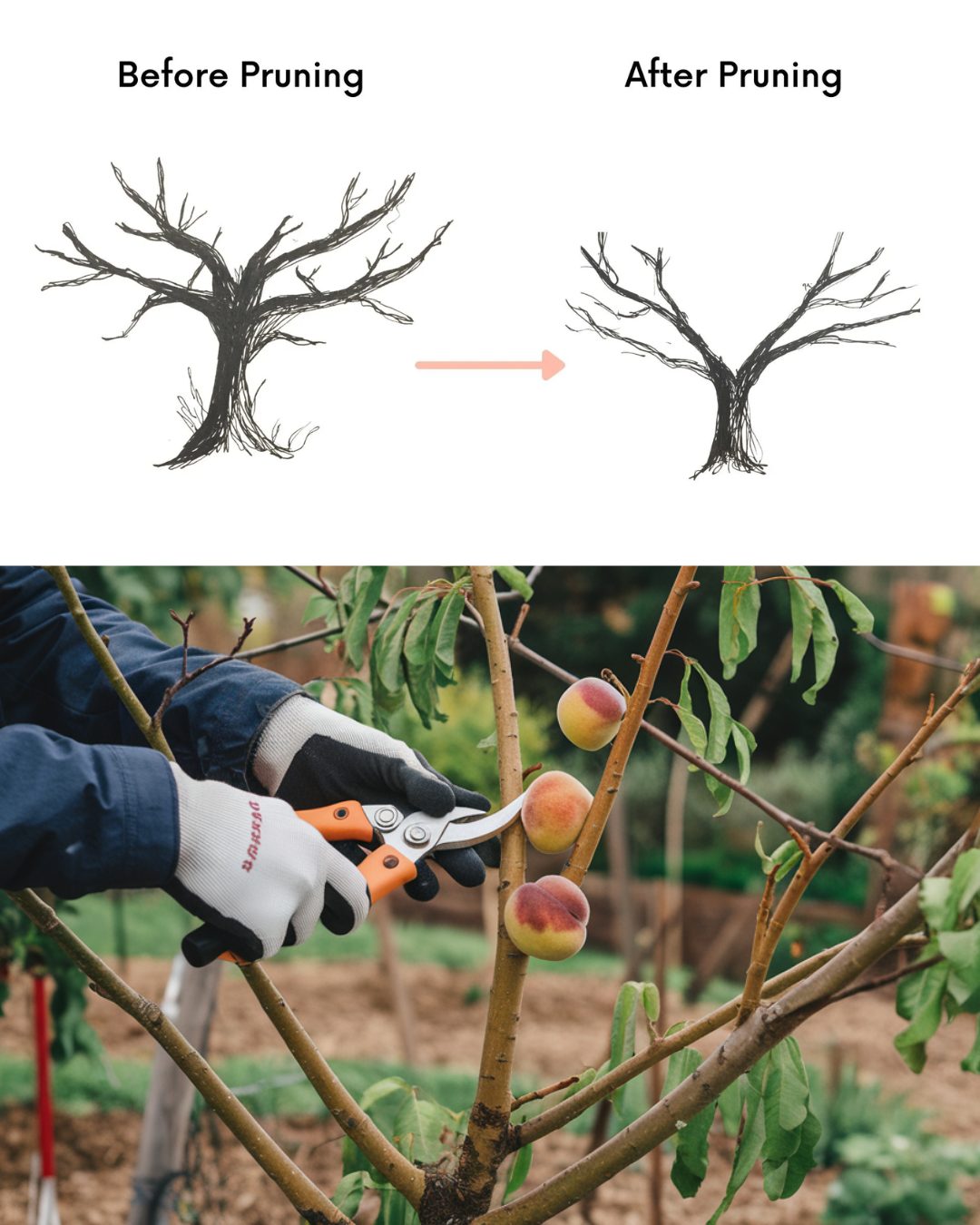1. Remove Diseased or Broken Branches:Identify and cut out any branches that appear diseased or broken to maintain tree health.
2. Maintain Open Center Shape:
Ensure the tree maintains an open center shape to promote airflow and light penetration.
Remove vigorous upright shoots growing towards the center of the tree.
3. Prune for Fruit Production:
Focus on pruning branches that are pencil-sized, as these are optimal for fruit-bearing.
Cut back branches that are too long (over 24 inches) to about 12-18 inches to strengthen them for fruit-bearing.
4. Control Tree Size:
Prune branches that grow straight up to maintain a 45-degree angle for better fruit production and easier maintenance.
5. Reduce Crop Load:
Thin out excess fruiting wood to ensure better quality fruit and prevent overcrowding.
Aim for about six inches between each peach to avoid issues with airflow and fungal diseases.
6. Training Young Trees:
When planting young peach trees, cut down the central leader to encourage lateral branch growth.
Train scaffolding branches at a 45-degree angle to support fruit weight and maximize light exposure.
7. Final Pruning Steps:
Continuously assess and prune branches to maintain an open center and optimal fruit production structure.
Regularly remove diseased or unnecessary branches to keep the tree healthy and productive.
That’s it! Following these steps will help maximize peach tree production and health.
